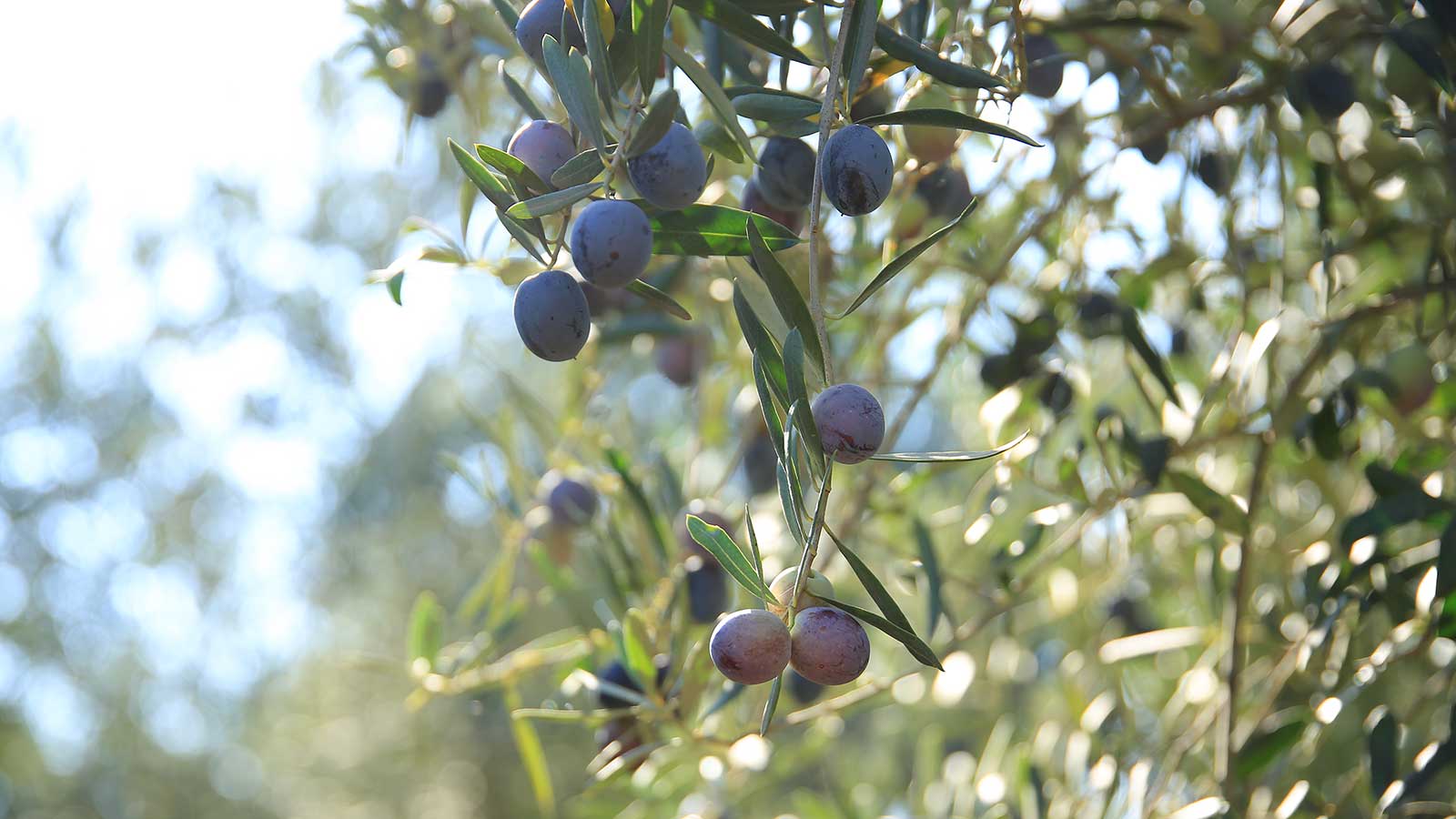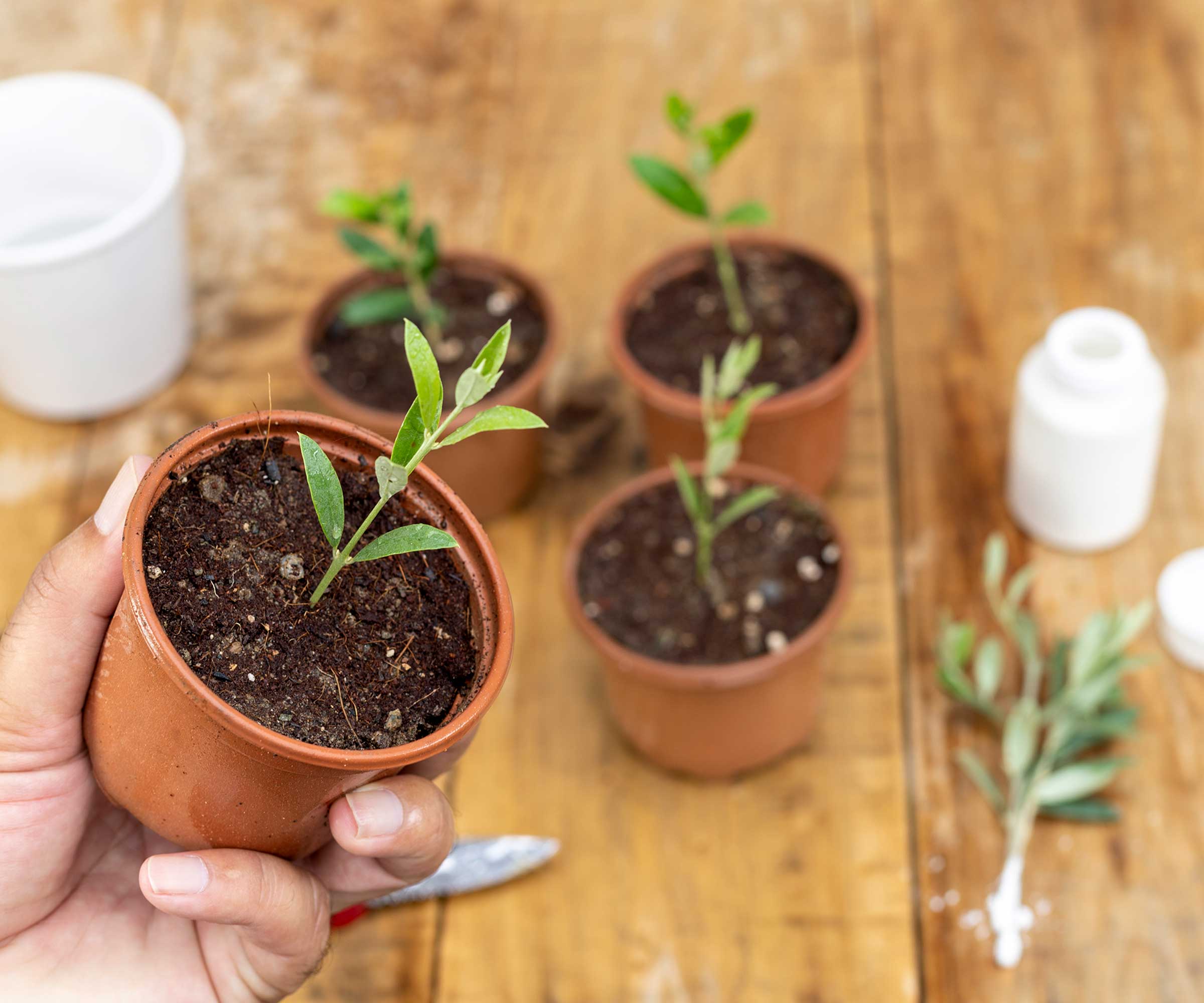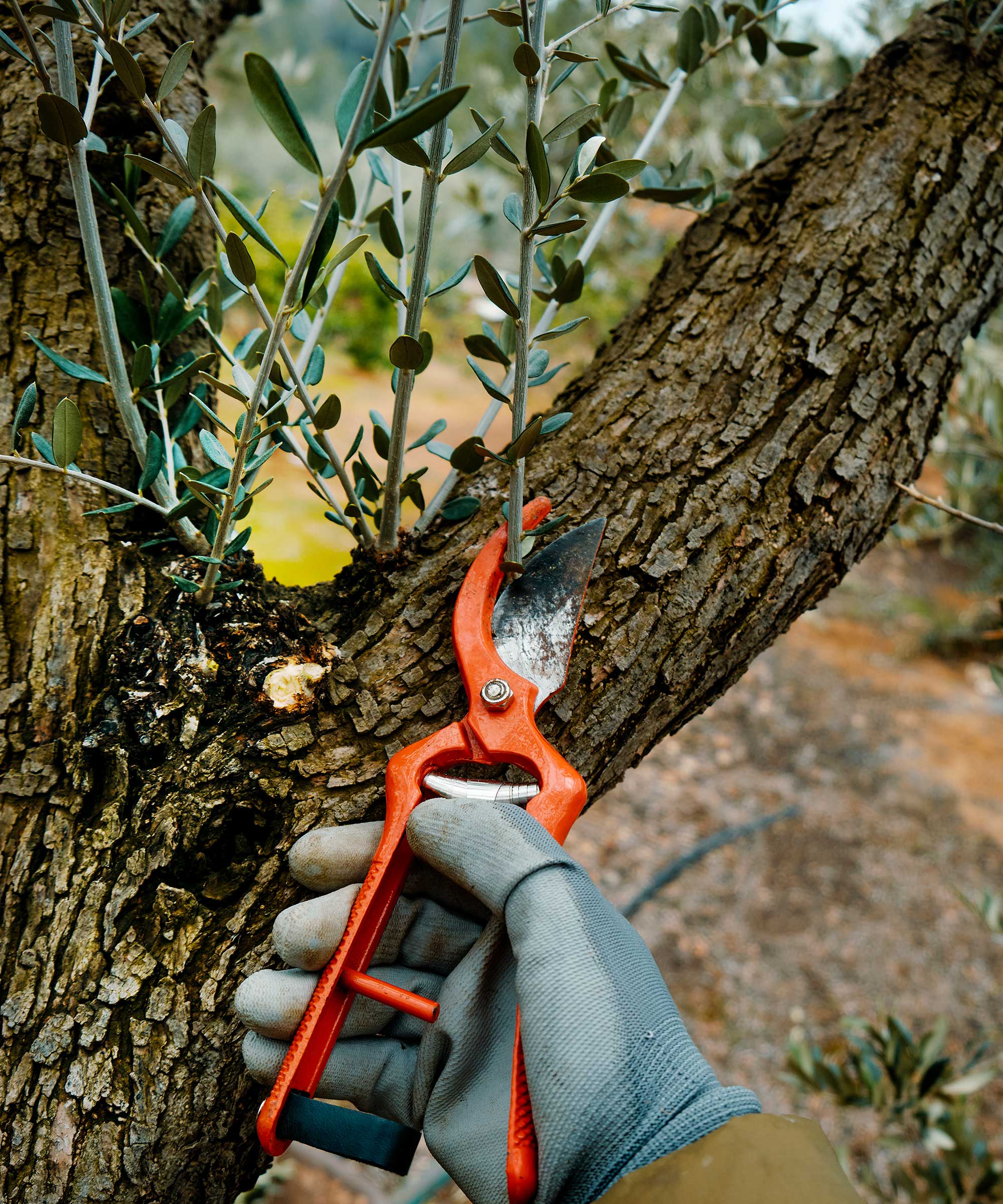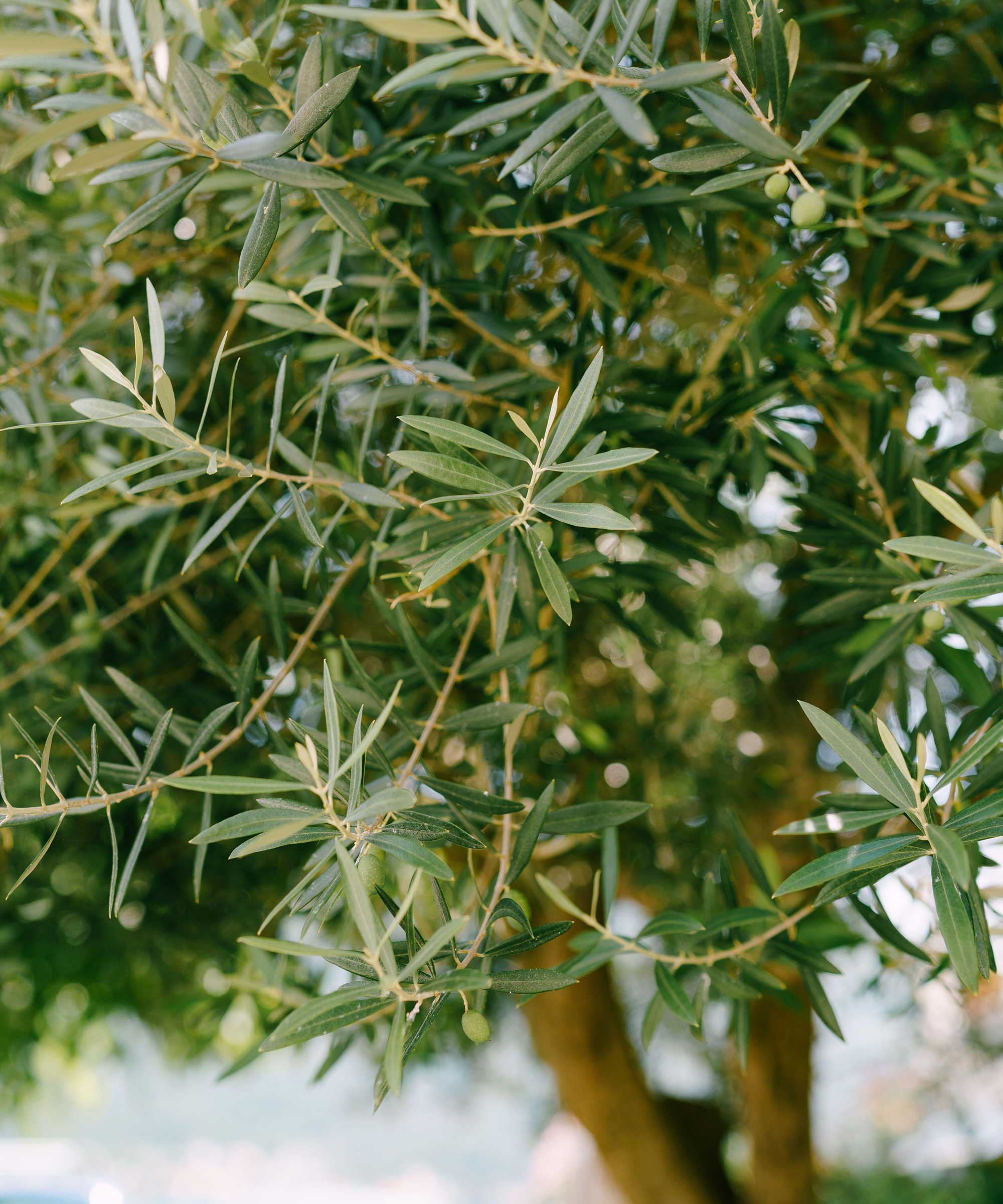How to propagate olive trees – horticultural experts explain ways to increase your stock of these silvery-leaved trees, plus which mistakes to avoid
Boost the Mediterranean vibe in your yard for free


Whether grown in the ground or in a large, terracotta pot, olives are a beautiful and relatively easy-going backyard tree. Their silvery leaves shimmer in the sun, lending a Mediterranean vibe to any space, and they also have the benefit of being drought-tolerant once established.
If you're already looking after an olive tree, you'll know how fabulous they are – and the idea of growing one or two more is likely to appeal. The good news is, these evergreens can be propagated via semi-hardwood and hardwood cuttings, and the process is more straightforward than you might expect.
Below, two horticultural experts share their advice on exactly how to go about it (and when), so you can try it at home. There are also tips on which mistakes to avoid, to increase your chances of success.
How to propagate olive trees from semi-hardwood cuttings

Plant your cuttings in well-draining soil
According to Amy Enfield, senior horticulturist at ScottsMiracle-Gro, semi-hardwood cuttings generally root easier and faster than hardwood cuttings. They are propagated in early summer or mid-summer, she says, and are taken from vigorous, one-year-old stems. Semi-hardwood cuttings are sometimes referred to as semi-ripe cuttings.
To take cuttings from your plants in this way, start by choosing healthy shoots that have new growth. 'One-year-old stems are generally firm (slightly woody) at the base but still pliable at the end,' Amy says. Your cuttings should be 6-8 inches long, with a one-quarter-inch diameter, she adds.
It's then time to prep your cuttings, ready for planting. 'Remove the lower leaves, leaving only a few at the tip of the cutting. If the remaining leaves are large, you can cut them in half to help reduce moisture loss.' Then, using clean and sharp hand pruners, make an angled cut just below a growth node at the base of the cutting. Amy also recommends dipping the cut end of your cutting in rooting hormone to help increase your success rate, although notes that olive cuttings can still root without it.
Next, she advises planting the cuttings in containers that are 4-8 inches in diameter and have drainage holes, filled with a well-draining mix such as Miracle-Gro® Seed Starting Potting Mix (a pack of three is available from Amazon). 'Make sure the mix is thoroughly moist (about the dampness of a wrung-out sponge) before inserting your cuttings.
Design expertise in your inbox – from inspiring decorating ideas and beautiful celebrity homes to practical gardening advice and shopping round-ups.
'Cover your cuttings with a propagation dome or a clear plastic bag to help maintain humidity,' she continues. 'Find a warm spot (70-80°F is ideal) with bright, indirect light (no direct sunlight).' Using a heated propagation mat to keep the soil temperature at 70-75°F can also help encourage root formation, she adds. Similarly to when germinating seeds, don't let the cuttings dry out: 'Check the soil regularly and water as needed to keep it damp.'

Amy has 30 years of experience in the lawn and garden industry and has been with ScottsMiracle-Gro for 12 years. She has a BS and MS in Horticulture from Michigan State University and a PhD in Plant and Environmental Sciences from Clemson University.
How to propagate olive trees from hardwood cuttings

Take thicker, hardwood cuttings in winter
Hardwood cuttings are taken from more mature stems of the tree. They are harvested in the winter, says Amy – 'just prior to the spring warm-up.'
Nastya Vasylchyshyna, resident botany expert at Plantum, advises choosing strong, healthy, two- to three-year-old sections that are 8-12 inches long and about half an inch thick. They should be free of damage or signs of disease, she adds.
'Remove most of the foliage, keeping just three to five leaves at the top,' Nastya instructs. To encourage rooting, she recommends making a shallow vertical cut at the base of each shoot, using a disinfected knife. You can also wet the bottom half of the cutting, then dip it into rooting hormone powder, she adds.
Like with semi-hardwood cuttings, hardwood olive cuttings can be planted in containers with drainage holes, filled with a damp, well-draining mix. Nastya recommends making planting holes that are about two-thirds of the length of the cutting – the cuttings can then be inserted into the holes, with the soil gently tamped down around them to keep them stable and upright.
'Cover the container with a glass or plastic dome, or a plastic bag, to retain humidity, and place it in a warm area with filtered light,' she continues. 'Remove the cover from time to time to ventilate and check the soil moisture level. Water when the topsoil dries out, though you’ll need to do it less frequently under the covering, as moisture is retained longer.'
When propagating plants in winter using this method, remember that patience is key.

Nastya is a professional botany expert for the Plantum app that helps identify plants and plant diseases and provides care recommendations. Her specialization is plant morphology, phytopathology, and plant physiology.
Mistakes to avoid when propagating olive trees

There are some key plant cuttings mistakes to steer clear of when propagating olive trees. Nastya warns against letting the potting soil become too dry or too soggy to prevent the young, sensitive roots from drying or rotting.
'Keep the growing medium constantly moderately moist, giving the plants a drink once the topsoil gets dry,' she says. Amy also highlights the importance of drainage, noting how poorly-draining soil can lead to rot.
Too much sun can also be problematic, as can cause damage to your cuttings. Nastya says to avoid placing them on a south-facing windowsill. 'The best location is a spot with filtered, mild or indirect lighting.'
FAQs
How long does it take to grow an olive tree from a cutting?
According to Amy, it can require anywhere from one and a half months up to six months for cuttings to root. 'In some cases, it may even take up to a year. At this point, your young olive trees can be potted up into larger containers or planted in the ground outside. To reach the size of a small, fruit-bearing tree will take three to five years, and the trees will continue to grow up to 10 years before reaching full maturity.'
Will an olive tree grown from a cutting be the same as the parent plant?
Amy says yes. 'When new plants are propagated from cuttings taken from a parent plant, they are genetically identical to the parent – in other words, they are “clones". This means that you’re preserving the characteristics, like fruit quality, size, and disease resistance, from the original tree.'
Once your new olive trees are putting on new growth, keep a close eye on them to ensure they stay healthy. As they grow, knowing how to prune olives is useful for keeping them neat (particularly in small gardens).
You may also need to protect your olive trees in winter if you live somewhere where temperatures drop – young trees are generally more susceptible to damage.

Holly started writing about gardening five years ago, and she is a regular contributor to Homes & Gardens. She has also written many gardening features for Woman & Home and Real Homes, too. She has previous experience as a professional gardener, where she helped to plant and maintain private gardens. Holly has also looked after allotment plots over the years and loves to grow her own flowers and veggies from seed. In her spare time, she enjoys visiting local gardens, botanical drawing, and tending to her ever-growing collection of houseplants.
You must confirm your public display name before commenting
Please logout and then login again, you will then be prompted to enter your display name.